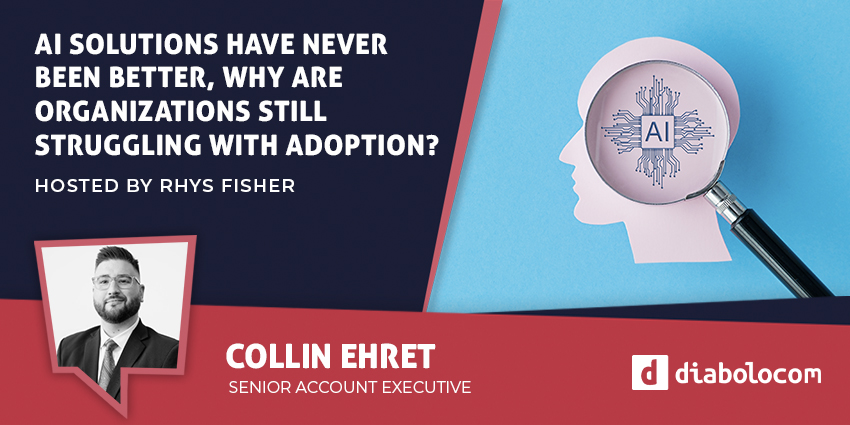Despite wave after wave of CX innovation, the same problems persist, miring journeys and causing frustration.
Still, customers must repeat information and wait a long time on hold because the contact center agent does not have adequate information at their fingertips.
Indeed, it’s no walk in the park for agents either, missing valuable information and bearing the brunt from customers.
Now, with customer patience at an all-time low, it’s time to get omnichannel right.
What Is Omnichannel, and Why Prioritize It?
An omnichannel customer experience captures critical customer context and ensures conversation continuity, as they switch between channels and interactions, retaining all relevant information.
As such, when the customer shifts to another channel, agents understand the critical points from the customer’s initial query and can pick up where they left off.
These initial queries could take place on automated channels. If so, the bot transcript will pass on to the agent when the customer escalates the conversation.
Consequently, agents can easily spot the customer’s intent and pick up from where the conversation broke down.
Omnichannel customer experience leads to higher CSAT scores as customer queries are better addressed without repeating themselves.
In addition, operations can better equip their teams to resolve queries, improve channel shifts, create a single flow of conversation data and bring in advanced Analytics giving businesses a single view of truth
Steps to Adopt an Omnichannel Customer Experience
Delivering an omnichannel experience involves many people, processes, and technology considerations. Yet, from a broader perspective, the following three steps will set many businesses in good stead.
Step 1 – Connect All Channels Within a Single Platform
The most significant motivator for contact centers to switch to a cloud-native platform is that it allows much simpler integrations between channels. It also opens up connections to the CRM and agent desktop. These are critical for supporting omnichannel customer experiences.
When each channel connects to a central CRM, the customer’s interaction history appears in a singular thread, no matter how many times they have switched channels.
By also plugging the CRM into data from order management, document management, the voice of the customer, and many other tools, businesses can build a 360-degree view of a customer.
Agents must also work from a unified agent desktop that allows them to move a customer across channels while keeping all this vital customer context.
Step 2 – Enable Customer Channel Shift and Agent Transfers
After an interaction, the agent – or a virtual assistant – completes their post-call notes in the CRM, which are then available to the next agent who handles a contact from that customer.
Yet, that context must also carry over midway through an interaction, when a customer escalates the contact or an agent transfers it.
In the case of the customer, it is critical to creating escalation paths across digital channels, which they can follow, so the conversational context moves with them.
Click-to-call or click-to-chat links are excellent here, as they can carry over data from the original interaction, even within a self-service application.
For agents shifting a contact to colleagues, it gets trickier. Of course, the first agent could brief the next, but that adds to hold times and drains the workforce. Passing on the transcript of the initial interaction could also work, but scouring it again takes precious seconds.
Step 3 – Uncover New Ways to Retain Customer Context
Customers do not only interact with the business through digital channels and voice. They go to stores, in-person events, and third-party review sites.
Each touchpoint offers precious data that enables a next-generation omnichannel strategy. Yet, retaining context at these touchpoints is notoriously tricky.
Some brands give customers QR codes through an app, which they scan at the shop counter to capture data. Such a strategy can work well with an incentive, as customers verify themselves, and the company tracks their purchase history.
Step 4 – End to End Analytics of the Customer Journey
Organizations should consider whether their CCaaS vendor provides end-to-end customer journey analysis on power dashboards.
Available within many CCaaS solutions, advanced analytics solutions harness real-time analytics to track the progress of queries and customer intent, so everyone concerned has updated context.
In addition, the solution can delve deeper using AI models to understand shifts in customer sentiments throughout the conversation.
Identifying the Best Customer Engagement Channels
With a cloud-native omnichannel platform, companies remove many technical and cost barriers to implementing new channels. It also becomes easier to build the channel into agent workflows and store interaction records.
Nevertheless, there are still many considerations to make before adding to the omnichannel mix. These include:
- Where will customers access the channel?
- Is it possible to build an escalation route to voice?
- Can agents see if the customer has read communications through the channel?
- Which queries are best served through the channel?
- Will the deployment increase handling times?
- Are this attractive for high-value customers and digital natives?
After thinking all this through, businesses may begin to map customer journeys and consider how to maintain customer context.
Yet, remember, customers, do not think of “channels”. Typically, they have a goal and choose the channel based on their perception of how easy it will be to reach that.
As a result, many customers still pick up the phone no matter what. Yet, by delivering an omnichannel experience, customers will begin to place more faith in new channels – such as messaging apps, Instagram, and social media – to solve their issues.
Businesses can then create a consistent, continuous customer journey across channels, meeting customers where they want to be.
Looking Ahead: How Omnichannel Enables Total Experience
We are moving into a world where “customers believe they can get whatever they want, whenever they want, within minutes,” according to McKinsey & Company.
Rushing through channel integrations seems tempting to meet the needs of this new generation of consumers. However, keeping them in siloes locks up essential data.
Consider how this impacts total experience. Users cannot shift channels between touchpoints seamlessly, disrupting multi experiences. They default to voice, where reps have no access to their data – frustrating customers and agents alike.
To avoid this troubling scenario, consider working with a cloud-native CCaaS vendor that is omnichannel by design, enabling the maximum interoperability of customer data.
Qollective.CX, among others, is a new market entrant that offers an AI-led product for transitioning to total experience by taking the omnichannel route.
Organizations can automate their customer service, simplify internal stakeholder experiences and deploy AI Virtual Agents quicker than ever, all from a single platform.
The platform is innovated by Quantiphi, a leader in the Conversational AI space with a track record of automating more than 500 million customer interactions.
Its Qollective.CX lighthouse customer program is now open to organizations who wish to become an insider for its new-age capabilities with early bird benefits.
Leveraging such capabilities goes a long way in driving a competitive advantage over competitors that still operate with a siloed-by-channel engagement model.
Indeed, omnichannel experiences will continue to crop up as the demands of the modern, digital-savvy customer evolve and organizations must pivot their approach to meet this transition.







